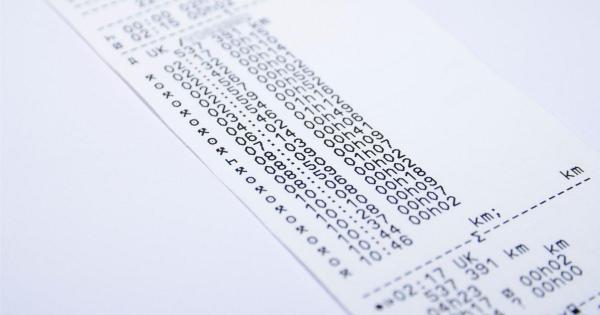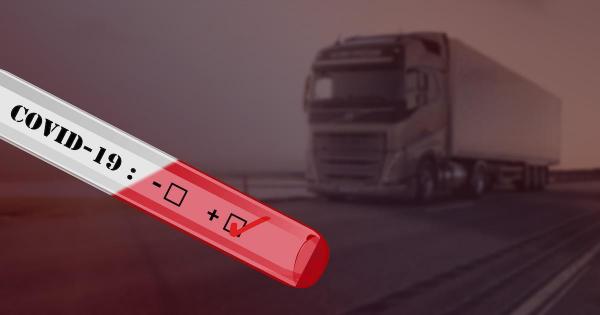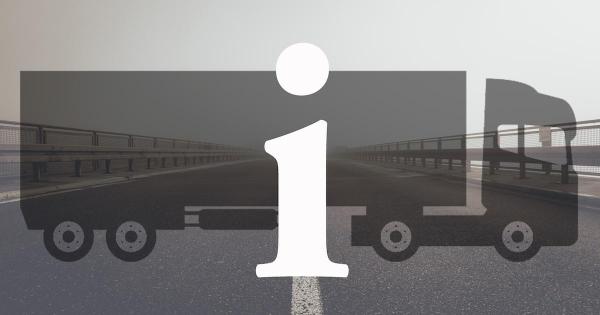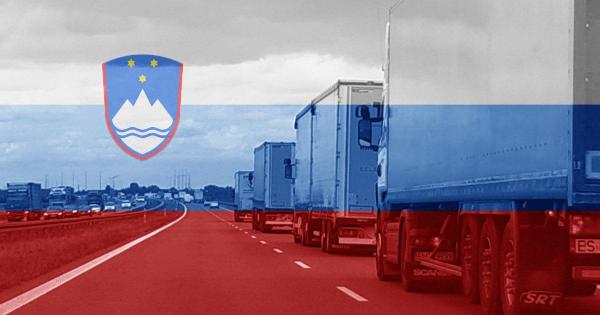
Traffic gridlock across Dover – temporary derogation from the provisions of Regulation 561/2006
In response to the exceptional pressures on the freight industry, the Department for Transport (DfT) has introduced a temporary relaxation of the enforcement of the EU drivers’ hours rules in England, Scotland and Wales.
This temporary relaxation of the rules reflects the urgent situation arising from the cancellation of some ferry services. This is resulting in congestion in and around ports affecting the carriage of goods and passengers by road.
Timing of the relaxation
The relaxation of the rules applies from 12:01am on 9 April 2022 until 11:59pm on 8 May 2022. The current situation is being kept under review, and the department reserves the right to withdraw or amend the relaxation if circumstances change.
Scope of the relaxation
Anyone driving under the EU drivers’ hours rules and undertaking the carriage of goods or passengers by road can use this relaxation where necessary. The relaxations are not limited to specific sectors or journeys.
This relaxation does not apply to drivers in scope of the GB domestic drivers’ hours rules and, so, not subject to tachograph controls.
Drivers’ hours rules are an important road safety measure and any deviation from the rules must be a last resort when other means of mitigating a situation have failed.
Therefore, the temporary exceptions to the drivers’ hours rules must only be used where necessary by drivers and transport operators.
When considering whether it is necessary to use the relaxation, DfT considers the following 3 conditions all need to be met (any transport operator intending to use the relaxation must consider whether the conditions are met):
1. Evidence of detriment to wider community
That there is a significant risk of a threat to human and/or animal welfare or a failure of a particular supply chain that will have a serious impact on essential public services.
Transport operators must obtain, to their satisfaction, confirmation from their customers that such a risk exists and that the customer is unlikely to be able to resolve the risk in other ways.
In the context of the transportation of food, fuel and medicines, this would include avoiding the risk of acute shortages at retail outlets that would be readily apparent to consumers.
In respect of these sectors and essential public services, they can include losses of production that would then lead to shortages.
However, shortages at retail outlets are not a justification in respect of many types of goods, such as domestic building supplies, clothing or supplies to hospitality.
2. Evidence that a relaxation would lead to a significant improvement in the situation
This includes evidence that the risk is unlikely to be resolved without using the relaxation.
3. Driver safety must not be compromised
Operators and self-employed drivers must assess the risks of using the temporary relaxation and implement suitable control measures and/or mitigations, so that the safety of the driver, other road users and those involved in loading and unloading is not compromised.
Transport managers should make sure that a risk assessment has been carried out and appropriate controls put in place. They should also continue to monitor and review where necessary as long as the relaxation is used.
It is important to consider the risk of fatigue and the effect of the relaxation on shift patterns. For example, if the relaxation related to daily driving time has been used, it should not be followed by a reduced daily rest period and should be used in the context of stable start times for shifts.
Information about fatigue and shift work is available.
It should be noted that the temporary relaxation has been brought in primarily to add reliability and resilience to duty rosters, as opposed to extra scheduling of deliveries.
It is also essential that use of the relaxation is agreed genuinely with the drivers involved, including in the light of a driver’s specific circumstances.
Drivers continue to be bound by the Road Transport (Working Time) Regulations 2005. This legally limits the amount of working time (including driving) a driver can do in any given week to a maximum of 60 hours, with an average of 48 hours a week calculated over a rolling 17- to 26-week period.
If you are concerned that a driver or the vehicle operator is breaking the drivers’ hours rules, (including the terms of this temporary relaxation) or the working time regulations, this should be reported to the Driver and Vehicle Standards Agency (DVSA).
Details of the relaxation
The retained EU drivers’ hours rules can be temporarily relaxed as follows:
(a) Replacement of the EU daily driving limit of 9 hours with one of 11 hours.
(b) Reduction of the daily rest requirements from 11 to 9 hours, together with a relaxation on the use of the ferry/train derogation to allow its use when on a reduced daily rest of 9 hours (instead of when on a regular rest period of 11 hours).
(c) Lifting the weekly (56 hours) and fortnightly driving limits (90 hours) to 60 and 96 hours respectively.
(d) Postponement of the requirement to start a weekly rest period after 6 x 24-hour periods, for after 7 x 24-hour periods, although 2 regular weekly rest periods or a regular and a reduced weekly rest period will still be required within a fortnight.
Drivers’ must not use relaxation (a) and (d) at the same time. This is to ensure drivers can get adequate rest.
All other drivers’ hours rules remain in force unchanged, including the requirement for drivers to take at a break period of at least 45 minutes after 4 hours, 30 minutes of driving.
Use of the relaxation
The practical implementation of the temporary relaxation should be through agreement between employers and employees and driver representatives.
Operators must notify the DfT if this relaxation is used by completing an initial notification of relaxation form and emailing a copy to [email protected].
A completed follow-up notification of relaxation form must then be emailed to [email protected] one week after the end of the period of relaxation and by 15 May 2022 at the latest.
Notification forms are not required:
– for operators using the relaxation only in the course of international journeys via Kent
– from operators established outside the UK.
When driving under the retained EU drivers’ hours rules, drivers must note on the back of their tachograph charts or printouts the reasons why they are exceeding the normally permitted limits. This is usual practice in emergencies and is essential for enforcement purposes.
The temporary relaxation of the rules reflects the urgent situation arising from the cancellation of some ferry services. This is resulting in congestion in and around ports affecting the carriage of goods and passengers by road.
DfT encourages operators facing high work demands or work absences to take urgent measures to secure drivers who have limited or no current work. DfT wishes to make clear that driver safety must not be compromised. Drivers should not be expected to drive while tired. Employers remain responsible for the health and safety of their employees and other road users. DfT emphasises that, as a general rule, we expect business to plan for and manage the risks of disruption to supply chains.
Please note that relaxations in relation to transport undertaken solely in the territory of Northern Ireland are a matter for the devolved authority.
gov.uk

Störungen auf der deutschen A43 und der niederländischen A1
Fahrern wird empfohlen, die Routen zu überprüfen und bei der Planung ihrer Fahrten zusätzliche Zeit einzuplanen.
Deutschland – A43
Aufgrund des Umbaus der Eisenbahnbrücke über die Autobahn A43 südlich des Herner Kreuzes kommt es in den kommenden Monaten zu mehreren Sperrungen der Autobahn. Konkrete Termine sind unten aufgeführt.
◾ Am Samstag, (30.4.) wird der neue Überbau über der Ausfahrt betoniert. Deswegen wird von 4 bis 20 Uhr die A43 in Richtung Münster gesperrt, auch die Verbindungen zur A42 sind erneut betroffen.
◾ Im nächsten Schritt wird am Wochenende von Freitag (1.7.) ab 21 Uhr bis Montag (4.7.) um 5 Uhr das Traggerüst demontiert. Auch hier werden die Fahrbahn Richtung Münster und die Verbindungen voll gesperrt.
◾ Am Wochenende von Freitag (23.9.) ab 21 Uhr bis Montag (26.9.) um 5 Uhr sind daher beide Fahrtrichtungen der A43 zwischen dem Kreuz Herne und Herne-Eickel voll gesperrt, ebenso wie die Verbindungen zum Kreuz. Sollte einer der Arbeitsschritte nicht am angestrebten Termin durchgeführt werden können, werden die Arbeiten entsprechend verschoben und ein Ausweichtermin im Oktober genutzt..
◾ Die finalen Arbeiten finden im Februar 2023 statt. Am Wochenende von Freitag (10.2.) ab 21 Uhr bis Montag (13.2.) wird die Autobahn noch einmal in beiden Fahrtrichtungen gesperrt, inklusive der Verbindungen. Dann werden die Reste der alten Brücke abgerissen.
Niederlande – A1
Die A1 Amersfoort in Richtung Amsterdam an der Anschlussstelle Eemnes wird von Freitag, 29. April, 21:00 Uhr bis Montag, 2. Mai, 17:00 Uhr gesperrt. Die Sperrungen betreffen für die Dauer mehrere Einfahrten, Ausfahrten und Verbindungsstraßen der Werke. Der Fernverkehr auf der A1 Amersfoort nach Amsterdam wird ohne Unterbrechung weitergeführt.
Vom 1. April bis 20. Juni werden an 7 Wochenenden größere Wartungsarbeiten an der Eemnes-Kreuzung durchgeführt, die zu verschiedenen Sperrungen führen. An jedem Wochenende wird an einem anderen Abschnitt der Kreuzung gearbeitet.
Sperrungen und Umleitungen
Von 21:00 Uhr am Freitag, 29. April bis 5:00 Uhr am Montag, 2. Mai:
◾ Ein- und Ausfahrt Soest (10) A1 Richtung Amsterdam wird gesperrt: Der Verkehr aus Amersfoort wird über die Ein- und Ausfahrt Laren (9) und über die A1 Richtung Soest (10) umgeleitet.
◾ Der Verkehr von Soest in Richtung Amsterdam wird über die A1, Ein- und Ausfahrt Baarn / Embrugge (11) umgeleitet.
◾Verbindungsstraße von Amersfoort (A1) nach Utrecht (Autobahn A27) wird gesperrt: Der Verkehr aus Amersfoort wird über die Ausfahrt Laren (9) und die A1 umgeleitet. Utrecht ist auch von Amersfoort aus über die A28-Kreuzung Hoevelaken zu erreichen.
◾Die Straße Amersfoort (A1) nach Almere (A27) wird gesperrt: Der Verkehr von Amersfoort wird über die A1, Ausfahrt Laren und Ausfahrt (9) und die A1 auf die A27 umgeleitet. Almere ist auch von Amersfoort aus über die Abzweigung Hoevelaken / N301 / N305 (A28) zu erreichen.
◾Die Straße Amere (A27) nach Amsterdam (A1) wird gesperrt: Der Verkehr von Almere wird über die A1 umgeleitet, die nach Baarn / Eembrugge (11) führt und diese verlässt. Amsterdam kann auch von Almere aus über die Autobahn A6 erreicht werden.

Die Arbeiten an der Anschlussstelle Eemnes werden an folgenden Wochenenden durchgeführt:
◾ Wochenende 1: Freitag, 8. April, 21:00 Uhr, Montag, 11. April, 5:00 Uhr
◾ Wochenende 2: von 21:00 Uhr am Freitag, 22. April bis 5:00 Uhr am Montag, 25. April
◾ Wochenende 3: Freitag, 29. April, 21:00 Uhr, Montag, 2. Mai, 5:00 Uhr
◾ Wochenende 4: von 21:00 Uhr am Freitag, 13. Mai bis 5:00 Uhr am Montag, 16. Mai
◾ Wochenende 5: von 21:00 Uhr am Donnerstag, 19. Mai bis 5:00 Uhr am Montag, 23. Mai
◾ Wochenende 6: von 21:00 Uhr am Freitag, 10. Juni bis 5:00 Uhr am Montag, 13. Juni
◾ Wochenende 7: Freitag, 17. Juni, 21.00 Uhr bis 5.00 Uhr am Montag, 20. Juni.

Exemptions from Covid tests for HGV drivers heading for Romania
Romania’s National Committee for Emergency Situations has published an additional ordinance amending the measures applicable to professional drivers entering Romania from non-EU or EFTA countries.
Drivers from outside the EU:
– Drivers of vehicles with a maximum authorised mass exceeding 2.4 tons engaged in the transport of goods are currently exempt from the obligation to self-isolate and present a negative Covid test result.
– Drivers of vehicles with more than 9 seats (including the driver’s seat) engaged in the transport of passangers are exempt from the obligation to self-isolate if they have been vaccinated, have recovered from the Covid infection or can present a negative RT-PCR test result taken not later than 48 hours before entering the country. Only proofs of full vaccination with a full course of an approved vaccine are recognised. The exemption only applies to work-related travel.
EU drivers
Measures applicable to HGV drivers and those who are engaged in transporting people who have not be vaccinated or are not classified as recovered, arriving from EU countries, the European Economic Area or the Swiss Confederation:
– Drivers arriving from green or yellow list countries are exempt from the requirement to self-isolate or present a negative RT-PCR test result. The driver exemption only applies to work-related travel.
– Drivers arriving from red list countries are exempt from the requirement to self-isolate if they can present a negative RT-PCR test result taken no later than 72 hours before entering the country. The driver exemption only applies to work-related travel.
Currently, Poland is classified as a red list country.

Ausnahmen von Corona-Tests für Lkw-Fahrer die nach Rumänien reisen
Rumäniens Nationales Komitee für Notsituationen hat eine zusätzliche Verordnung zur Änderung der Maßnahmen veröffentlicht, die für Berufskraftfahrer gelten, die aus Nicht-EU- oder EFTA-Staaten nach Rumänien einreisen.
Fahrer von außerhalb der EU:
– Fahrer von Fahrzeugen mit einer zulässigen Gesamtmasse über 2,4 Tonnen, die im Güterverkehr eingesetzt werden, sind derzeit von der Quarantäne- und Testpflicht befreit.
– Fahrer von Fahrzeugen mit mehr als 9 Sitzplätzen (inkl. Fahrersitz), die zur Personenbeförderung eingesetzt werden, sind von der Quarantäneplicht befreit, wenn sie geimpft or genesen sind oder ein negatives Testergebnis (PCR, PoC-PCR) vorweisen können. Der Test darf höchstens 48 Stunden vor der Einreise erfolgen (Zeitpunkt der Abstrichnahme). spätestens vor der Einreise. Es werden nur Nachweise einer vollständigen Impfung mit einem vollständigen Verlauf eines zugelassenen Impfstoffs anerkannt. Die Fahrerbefreiung gilt nur für beruflich bedingte Reisen.
EU-Fahrer
Massnahmen für LKW-Fahrer und Personen, die nicht geimpfte oder nicht genesene Personen befördern, die aus EU-Staaten, dem Europäischen Wirtschaftsraum oder der Schweizerischen Eidgenossenschaft einreisen:
– Fahrer, die aus Ländern der grünen oder gelben Liste anreisen, sind von von der Quarantäne- und Testpflicht befreit. Die Fahrerbefreiung gilt nur für beruflich bedingte Reisen.
– Fahrer, die aus Ländern der Roten Liste anreisen, sind der Quarantäneplicht befreit, wenn sie geimpft or genesen sind oder ein negatives Testergebnis (PCR, PoC-PCR) vorweisen können. Die Fahrerbefreiung gilt nur für beruflich bedingte Reisen.
Derzeit ist Polen als Land der Roten Liste eingestuft.

The new pandemic measures introduced in the Netherlands do not apply to HGV drivers
The new measures, announced on December 18, will apply at least until Friday, January 14, 2022.
The following information refers to the transport sector:
– Green lane border crossings have been maintained, including those with the UK.
– Testing and self-isolation requirements do NOT APPLY to professional drivers, (the rule also applies to hauliers transporting goods from outside the EU to the EU).
Petrol stations (including shops) will be open after 5:00 PM. Cafés and restaurants at petrol stations along the main road network will only be open to professional drivers. Food courts at pertrol stations stations located along the secondary road network have to be closed, but drivers will be able to purchase food.

Die Niederlande: die neuen Maßnahmen gelten nicht für Lkw-Fahrer
Die am 18. Dezember angekündigten neuen Maßnahmen gelten mindestens bis Freitag, 14. Januar 2022.
Die folgenden Angaben beziehen sich auf den Verkehrssektor:
– Grünen Vorfahrtsspuren für Lkw sind aufrechterhalten worden, einschließlich derjenigen mit dem Vereinigten Königreich.
– Die Quarantäne- und Testpflicht GILT NICHT für Berufskraftfahrer (die Regel gilt auch für Spediteure, die Waren von außerhalb der EU in die EU transportieren).
Tankstellen (einschließlich Geschäfte) sind ab 17:00 Uhr geöffnet. Cafés und Restaurants an Tankstellen entlang des Hauptstraßennetzes werden nur für Berufskraftfahrer geöffnet. Gastronomiebetriebe an Tankstellen entlang des Nebenstraßennetzes müssen geschlossen werden, Fahrer können jedoch Lebensmittel kaufen.

Obligatorischer PCR-Test bei der Einreise nach Deutschland nach einem Aufenthalt in einem „Virusvariantengebiet“
In Deutschland werden Risikogebiete in zwei Kategorien ausgewiesen: Hochrisikogebiete und Virusvariantengebiete. Derzeit gelten Vereinigtes Königreich (Großbritannien und Nordirland) als Virusvariantengebiete.
1. Virusvariantengebiete
Bei Lkw-Fahrer, die sich in den 10 Tagen vor der Einreise nach Deutschland in einem zum Zeitpunkt der Einreise als Virusvariantengebiet eingestuftem Gebiet aufgehalten haben, gelten die folgenden Regeln:
✅ TESTNACHWEIS: muss sich jeweils auf einen PCR-Test beziehen, der maximal 48 Stunden zurückliegt. Antigentests werden in diesem Kontext nicht mehr anerkannt. Ein Impf- oder Genesenennachweis reicht nicht aus. Der erforderliche PCR-Testnachweis zweimal pro Woche erneuert werden muss. Kann ein solcher Testnachweis noch nicht bei Einreise mitgeführt werden, so muss diese Testung unmittelbar nach der Einreise nachgeholt werden und eine zweite Testung innerhalb einer Woche erfolgen, sofern sich die Person noch in Deutschland aufhält.
✅ ANMELDE- UND EINREISEQUARANTÄNEPFLICHT:
Eine 14-tägige Quarantäne and die Digitale Einreiseanmeldung sind erforderlich wenn sich das Transportpersonal zu einem beliebigen Zeitpunkt in den letzten zehn Tagen vor der Einreise mehr als 72 Stunden in einem zum Zeitpunkt der Einreise als Virusvariantengebiet eingestuftem Gebiet aufgehalten hat und sich mehr als 72 Stunden in der Bundesrepublik Deutschland aufhalten wird. In diesen Fällen bleibt eine direkte Ausreise für das Transportpersonal jedoch erlaubt.
Kostenlose Testpunktkarte
Sie müssen keinen Test im Voraus buchen, aber überprüfen Sie die Öffnungszeiten des Testgeländes. Die Tests sind an den folgenden Standorten KOSTENLOS.
2. Hochrisikogebiete
Nach Voraufenthalt in einem zum Zeitpunkt der Einreise als Hochrisikogebiet eingestuften Gebiet, gelten die folgenden Regeln:
✅ TESTNACHWEIS: nicht erforderlich
✅ ANMELDEPFLICHT: nicht erforderlich
✅ EINREISEQUARANTÄNEPFLICHT: nicht erforderlich
Eine Liste der derzeit ausgewiesenen Risikogebiete finden Sie auf RKI.

Mandatory PCR test when entering Germany after a stay in „areas of variants of concern”
In Germany, risk areas are classified into two categories: high risk areas and areas of variants of concern. The United Kingdom (Great Britain and Northern Ireland) are currently considered areas of variants of concern.
1. Areas of variants of concern
The following rules apply to HGV drivers who in the 10 days prior to entering Germany have stayed in an area classified as a area of variants of concern:
✅ OBLIGATION TO FURNISH PROOF:
only a PCR test result is admitted (performed max. 48 hours before entry). Antigen tests are no longer accrpted. Proof of vaccination or recovery is not sufficient. The required PCR test must be taken twice a week. If such a test result cannot be presented upon entry, the test must be performed immediately after entry and a second test must be performed within the same week, provided the person is still in Germany.
✅ OBLIGATION TO REGISTER AND SELF-ISOLATE:
A 14-day quarantine and the digital registration on entry are required if in the last 10 days prior to entering Germany an HGV driver has stayed in an area classified as a area of variants of concern for more than 72 hours and intends to stay in Germany for more than 72 hours. In these cases, however, HGV drivers are still permitted to leave the country directly.
Free test point map
You do not need to book a test in advance, but check the test site opening hours. The tests are FREE OF CHARGE at the locations listed below.
2. High risk areas
The following rules apply to HGV drivers who in the 10 days prior to entering Germany have stayed in an area classified as a high risk area:
✅ OBLIGATION TO FURNISH PROOF: none
✅ OBLIGATION TO REGISTER: none
✅ OBLIGATION TO SELF-ISOLATE: none
A list of the currently identified risk areas can be found on RKI.

Änderungen der Güterverkehrsbeschränkungen auf slowenischen Straßen
Das slowenische Infrastrukturministerium hat die Verkehrsbeschränkungsverordnung in der Republik Slowenien geändert und ergänzt. Die Änderungen beinhalten ein Fahrverbot für Lkw bis 22:00 Uhr an Sonn- und Feiertagen.
Die Novelle, die am 30.12.2021 in Kraft tritt, verlängert das Fahrverbot für Lkw und Fahrzeugkombinationen mit einer zulässigen Gesamtmasse über 7.500 kg sowie für Traktoren und Landmaschinen am Freitag vor Ostern ab 14:00 Uhr bis 22:00 Uhr (vorher bis 21:00 Uhr). Auch an Sonn- und arbeitsfreien Tagen wird das Verbot verlängert: Es gilt nun von 8:00 bis 22:00 Uhr (bisher bis 21:00 Uhr).
Das Verbot ist verlängert worden, um die Verkehrssicherheit und den Verkehrsfluss an Grenzübergängen zu verbessern. Das geänderte Verbot wird als eine der wichtigsten Maßnahmen zur Vermeidung von Unfällen hervorgehoben.
Die sonstigen Regelungen zum Fahrverbot für Lkw mit mit einer zulässigen Gesamtmasse über 7500 kg sowie Traktoren und Landmaschinen während der touristischen Sommersaison bleiben unverändert.
Auch die Straßenverkehrsordnung ist um einige neue Ausnahmen für Fahrzeuge ergänzt worden, die für die Erbringung bestimmter Dienstleistungen unverzichtbar sind. Zusätzlich zu den bestehenden Ausnahmen wurden die folgenden hinzugefügt:
– regelmäßige Wartung zur Instandhaltung der Bahninfrastruktur,
– Transport von flüssigen technischen Gasen (medizinischer Sauerstoff, Sauerstoff, Stickstoff, Argon, Kohlendioxid usw.),
– Transport von Stromerzeugern für Rundfunk- und Fernsehteams,
– Transport von Milch zwischen Molkereien.

Changes in freight traffic restrictions on Slovenian roads
The Slovenian Ministry of Infrastructure has amended and supplemented the traffic restriction regulation in the Republic of Slovenia. The changes include a driving ban for trucks until 10:00 PM on Sundays and public holidays.
The amendment, which enters into force on December 30, 2021, extends the driving ban for lorries and vehicle combinations with a maximum authorized mass over 7,500 kg, as well as for tractors, and agricultural machines, on Friday before Easter from 2:00 PM to 10:00 PM (previously to 9:00 PM). The ban has also been extended on Sundays and non-working days: now it applies from 8:00 AM to 10:00 PM (previously to 9:00 PM).
The ban has been extended to improve traffic safety and traffic flow at border crossings. The amended ban has been highlighted as one of the most important measures of preventing accidental collisions.
Other rules concerning the driving ban on the movement of HGVs with a MAM over 7500 kg as well as tractors and agricultural machines during the summer tourist season remain unchanged.
The road traffic regulation has also been supplemented with some new exceptions for vehicles that are indispensible in the provision of certain services. In addition to the existing exceptions the following ones have been added:
– vehicles used for regular servicing required to maintain the railway infrastructure,
– transport of liquid technical gases (medical oxygen, oxygen, nitrogen, argon, carbon dioxide etc.),
– transport of power generators used by radio and television crews,
– transport of milk between dairies.